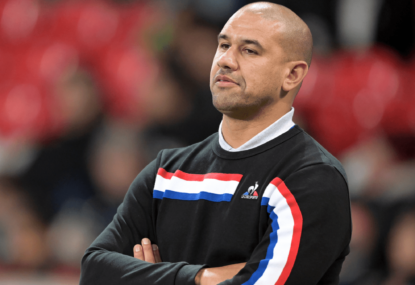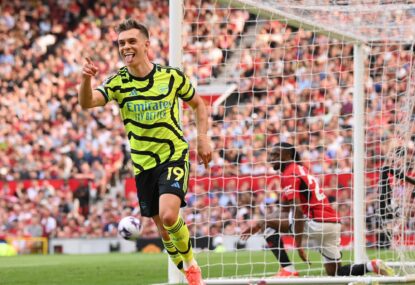Australian football has never had a simple path to success. There have always been difficult obstacles to overcome, with the battle for supremacy in a saturated sporting environment a fierce one between AFL, NRL and rugby.
The A-League was brought onto our Australian shores in 2005 – following the demise of the National Soccer League the previous year – to help cultivate the development of the game, and expand the code to a more mainstream public.
The competition broke away from the ethnic ties that were manifest in the NSL era. With pyramids of hype engulfed the new A-League campaign, opinions are diverse in regards to what us, football enthusiasts, believe is measurable for success in our domestic competition.
Some within the football community are content with improved average attendances; however fans should hold higher ambitions, as football merits a stronger following.
Despite the numerous impediments evident throughout the competition’s six-year history, overall it’s fair to assume that the league is becoming a success.
Although, with this notion, the A-League still has a long was to go until we reach the mesmerising heights of our major competitors – from a football perspective, the J.League in Japan and in our Australian market, the AFL and NRL.
Whilst crowds were steadily rising throughout the initial three years – with an average of over 14,000 per game in season three – attendances have palpably dwindled since.
A profusion of reasons come to mind – cross-code conflict, minimal community engagement, an undeveloped expansion process and lacklustre marketing efforts – have all contributed to a tenuous average of just over 8,000 last season.
Readers may be wondering: how can the A-League be an astute success if there are such worrying trends? Well, in contrast to the NSL days, it’s obvious we’ve come a long way. The code, thankfully, is now seen in a professional light.
Footballers are employed on a full-time basis, technical standards are improving, media coverage is convalescing and the league is being portrayed as a competitive division amongst the football sphere. From an international perception, the Socceroos are perhaps Australia’s most recognised sporting brand, with two successive World Cup Finals appearances and a radiant image depicted amongst our national football affiliate.
The recent arrival of Socceroo idols Harry Kewell and Brett Emerton speaks volumes for the game in this country. To comprise of such highly credentialed figures is a testament to how far the competition has come.
Their presence at Melbourne Victory and Sydney FC respectively – in the country’s two biggest markets – has already promoted awareness, and further implies that football is no Mickey Mouse code in the Australian sporting marketplace.
Whilst there are many beneficiaries from their recent onset in Australia, the A-League still has a fair margin to travel, until the competition can firmly minimise the equilibrium between the other football codes.
In the lead-up to this season’s A-League campaign, the excitement was colossal, immersed with the arrivals of Kewell and Emerton, accompanied with a later start in October to avoid collision with the AFL and NRL seasons. The build-up was the biggest since the inauguration of the competition six years ago.
The question comes to mind, what should we deem as success or failure? For the game to prosper and create further in-roads in a highly competitive marketplace, can we continue to accept mediocrity and act as the little brother on the Australian sporting scene? In the past few days, debate has been rife in the Twittersphere as to what is considered to be a satisfactory mark in relation to crowd figures.
Emerton’s homecoming to the once ‘glamour club’ of Australian football received extensive media coverage in the lead-up to the A-League season. The former Blackburn star’s home debut against defending champion Brisbane Roar last Saturday mustered a crowd of 15,789. Whilst beating their own attendance record of 12,106 last year in only the club’s first home game of the season, it’s rather naive to believe that attendance figure is acceptable.
To be fair, considering the circumstances, it’s a paltry figure. Sydney FC CEO Dirk Melton would have anticipated a much larger attendance, given 40,000 admirers watched Kewell’s debut for Melbourne Victory the previous week.
Some fans have uttered that it’s a great start and something for the club to build on throughout the campaign. In theory, it’s true.
But – forgive me – can this really be believable? If the Sydney faithful can only acquire around 15,000 fans to a marquee event like this, then it leaves little to the imagination on what the prospective crowd figures will be for the average A-League fixture during the season.
Emersed in the largest market in the nation, Sydney FC have an obligation to lift the bar higher. Yes, a crowd just shy of 16,000 may be on par to the NRL’s 2011 season average of 16,267 – fetching their second highest attendance record following last year – although, accepting this figure as an accomplishment won’t produce elevated yardsticks for the league.
Additionally, Gold Coast United could only attract little over 4,000 enthusiasts to their opening round clash with Wellington Phoenix. This simply isn’t tolerable. Their struggles to attain creditable crowds is well documented, and although there has been a concerted effort to ramp up gate receipts – engaging in greater community engagement and lowering ticket prices – there still needs to be a drastic improvement.
Having deplorable crowds of this magnitude creates a poor image for the competition, when the A-League, in theory should be the top prize in town.
Football enthusiasts have argued that crowds have risen in the opening two weeks of this A-League season and are the best on record at the start of a new campaign. That’s fantastic, and great to see. Although with an October commencement – with little competitive competition – and considering extensive publicity, we shouldn’t be underselling ourselves.
This exasperating mind-set of second rate is good enough, needs to be abolished. For football to fully flourish, justifications for every underachievement need to stray away. Is it irrational to have lofty, yet realistic objectives? On the pitch, the game is moving in the correct direction. Technically, clubs are playing a superior brand of football, with enhanced game ethos to exert their tactical prowess.
We are besieged in a period where image has a profound impact on how the game is perceived. Mediocrity isn’t a constituent to success. As football devotees, we all understand that success isn’t reached overnight; it’s a building block which is slowly formulated, gaining poise and forging relationships as the voyage ventures forward.
Conversely, we must have the nous to stand up and say, “We should expect more, and can improve”. It’s very early in the new campaign, although underwriting our path to a vibrant destiny is what the football community must believe.
Realistic ambitions ultimately breads success – if football followers continue to behave as second fiddle, accepting deficiency, that’s how the game will be treated. Who’s to argue the A-League cannot have record breaking attendance figures this season? It will take a concerted effort from all involved, but it is certainly achievable.
Football will reach its potential; it’s merely a matter of time.
Follow Robbie on Twitter @RobertDiFabio – Courtesy of Goal Weekly


































































































